Words We Use glossary
Use our Glossary to find key words and terms used throughout the Training Program.
If there are any updates or revisions needed, please let us know.
Updated: August 2022
Special | A | B | C | D | E | F | G | H | I | J | K | L | M | N | O | P | Q | R | S | T | U | V | W | X | Y | Z | ALL
A |
|---|
Aboriginal Sport CircleAboriginal Sport Circle is the national voice in sport, fitness, culture and recreation pursuits for the Aboriginal peoples in Canada with organizations in the provinces and territories including Indigenous Sports Circle Northwest Territories (ISCNWT) and Yukon Aboriginal Sport Circle. | |
AccessibilityAccessibility refers to characteristics of the physical environment that make it possible for people to participate in recreation regardless of ability. | |
AccessibleAccessible means, no matter what a person’s circumstances or abilities
are, there is equal opportunity to fully participate. | |
Active LivingActive living is an approach to life that values and includes physical activity in everyday living. The goal is to look for ways to be active at work, school, at home, and during leisure time. Active living is not the same as an exercise program. Active living means making physical activity part of everyday life, whether you are taking the stairs instead of the elevator, participating in a standing or walking meeting, biking to work, doing yoga at lunch, gardening, taking the kids or dog to the park, walking to the other building at your facility, or swimming laps in the pool. Source: CCOHS: Active Living At Work | |
Active TransportationActive transportation refers to any form of human-powered transportation, such as walking, cycling, using a wheelchair, in-line skating or skateboarding. | |
ActivitiesFrom a planning perspective, activities are things you do like advertising, workshops, or training to carry out the project. | |
Annual BudgetsAnnual Budgets are the estimated revenues and expenditures of all the recreation programs and services over a year. | |
ArtsArts reflect culture and are a way of communicating through a medium that can be shared with others. | |
B |
|---|
BenefitsBenefits are the individual, social, economic, and environmental outcomes that recreation, parks, sports, fitness, active living, arts and cultural services have the potential to provide for individuals and communities. Source: 2.2 Benefits of Recreation and Leisure Programs – Program-Planning in Recreation | |
Benefits CatalogueIn 1990, the first “Benefits Catalogue” was developed to convince political decision makers that recreation, parks and culture services provide significant personal, social, environmental and economic impacts. In 1992, Parks and Recreation Ontario, in partnership with Canadian Parks and Recreation Association, produced 8 Benefits of Recreation. In 1997, the second Benefits Catalogue organized eight key outcome messages, supported by a total of 44 benefit statements, and backed by solid evidence. The Benefits Catalogue evolved into the National Benefits Hub providing evidence for 50 outcomes statements about the benefits of recreation, the trends impacting benefits, and emerging promising practices. In 2017, the National Benefits Hub was archived with the closure of the Leisure Information Network. Today, efforts to quantify the benefits can be found in Measuring the Impact of SPAR, an initiative of the Canadian Fitness and Lifestyle Research Institute (CFLRI) and the Canadian Parks and Recreation Association (CPRA). | |
